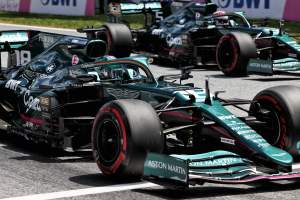With the launch of Aston Martin’s AMR22, it was great to finally see a Formula 1 car launch that actually showed us a reasonably accurate representation of what we might see on track at the beginning of testing.
While there will certainly be a few additions to the car, that’s to be expected.
Looking at the car as a whole, what we can conclude from this launch is that the new regulations have resulted in much tidier cars. The bodylines are aesthetically pleasing to the eye.
If we get both better-looking cars and ones that produce better racing, which is the main objective of these rules, then that’s very good for F1 in general.
Looking at the Aston Martin AMR22 in more detail also reveals more about the key areas of the cars built for these new regulations.
FRONT WING

The front wing is a four-element component and the leading edge flap has quite a short chord.
That main plane is working more as a flow conditioner, with the second element generating most of the downforce.
The top two flaps are the extra muscle that adds to the overall downforce produced by the whole front wing.
It looks like those two flaps are the adjustable components to alter the balance of the car.
The leading edge flap is hung below the second flap and these eight hangers –the vertical vanes between the mainplane and the second flap – and the endplates act as slot gap separators.
They may also generate small vortices, improving the performance of the other three elements.
NOSE AND WING MOUNTING
The nose itself has a fairly pronounced raised under-section. This helps the airflow coming off the centre section of the front wing by creating an opening.
The nose-to-wing mounting is fairly simple. The second element is a fairly long chord where it runs into the nose and it does most of the heavy lifting.
FRONT SUSPENSION
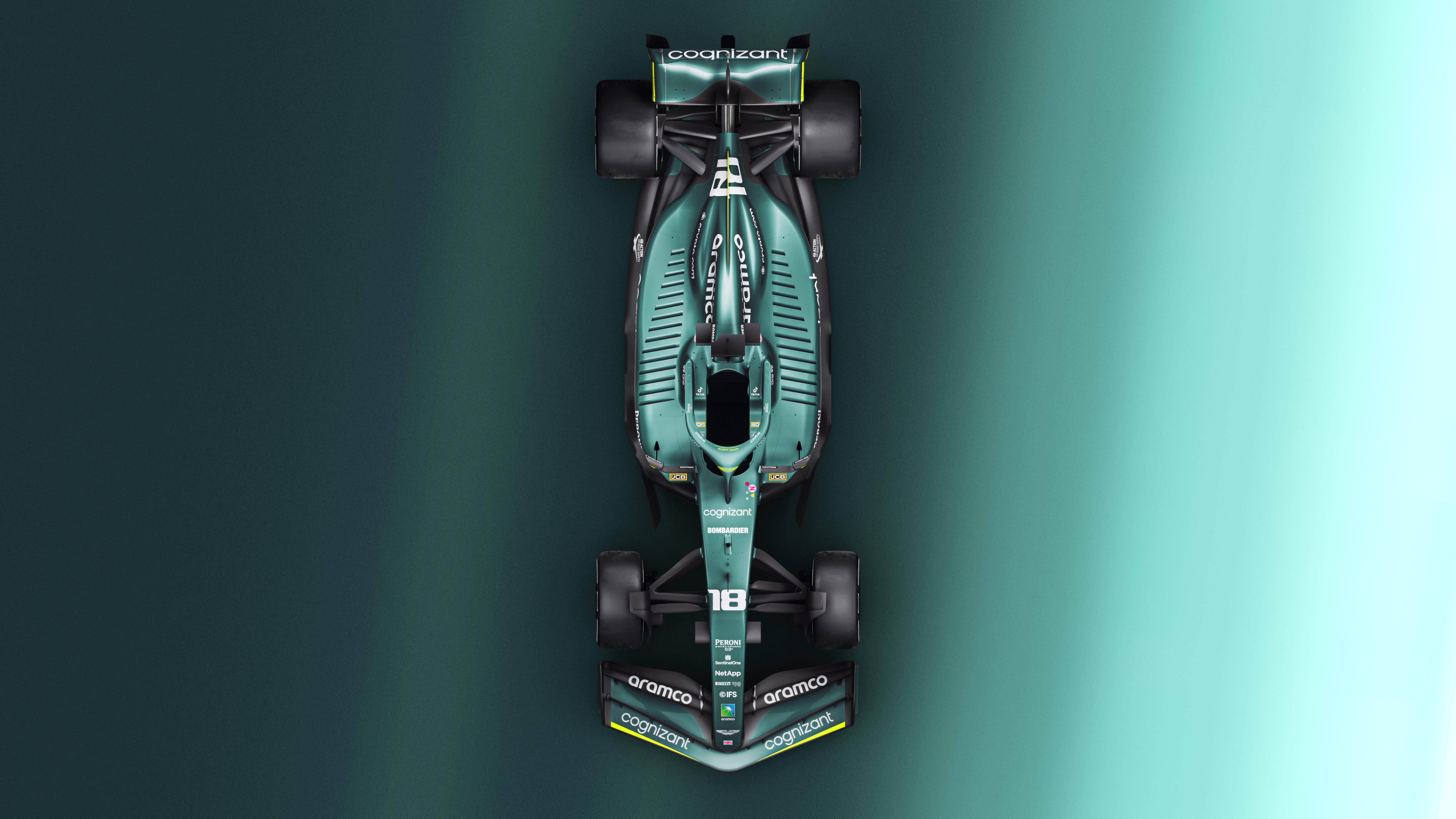
This is a conventional pushrod and double-wishbone solution.
The steering trackrod is in line with the top wishbone, effectively increasing the chord length of the top wishbone’s forwards leg. This helps realign the airflow coming off the trailing edge of the front wing flaps.
The actual suspension geometry with more conventional wishbone angles should be kinder to the tyre contact patch. Over the last few years, the tyres have become secondary to aerodynamics, but now might just be the time for a re-think on the priorities.
FRONT BRAKE DUCTS

The brake duct are reasonably small. With the bigger discs, there is more mass of carbon, so they will heat up slower so you might just get away with smaller ducts.
But that will come out from testing. The ducts sweep into this ‘mudguard’ that covers the upper inner corner of the tyre.
This reduces the tyre wake that will be spilling off that corner and could very easily compromise the leading edge of the underfloor.
BARGEBOARD-REPLACEMENT TURNING VANES
There’s no bargeboards on the 2022 cars, but there are vanes in this area.
On the Aston Martin, the outer turning vane is more reminiscent of the first iterations of the bargeboard that we first saw back at the start of 1993 when it was pioneered by McLaren.
This component’s main is to separate the tyre wake from the sidepod leading edge and improve the quality of the airflow getting to the leading edge of the underfloor. It will also act as a turning vane to improve the scavenging of the forward part of the floor.
Aston Martin still has a small turned up section on the outer edge of the floor, about a third of the way rearward, to help seal this section of the floor.
SIDEPOD LEADING EDGE
This is an area of the car that particularly caught my eye. It has a very square radiator inlet opening with a section outboard of that that makes it look like half an ellipse.
This doesn’t appear to have an opening, it’s just black. That could be to offer a stagnation point for the front wheel wake to disparate across before it flows down the side of the bodywork, but it could also be hiding some detail.
We will need to have a closer look at this when the car hits the track in testing.
SIDEPOD PROFILE
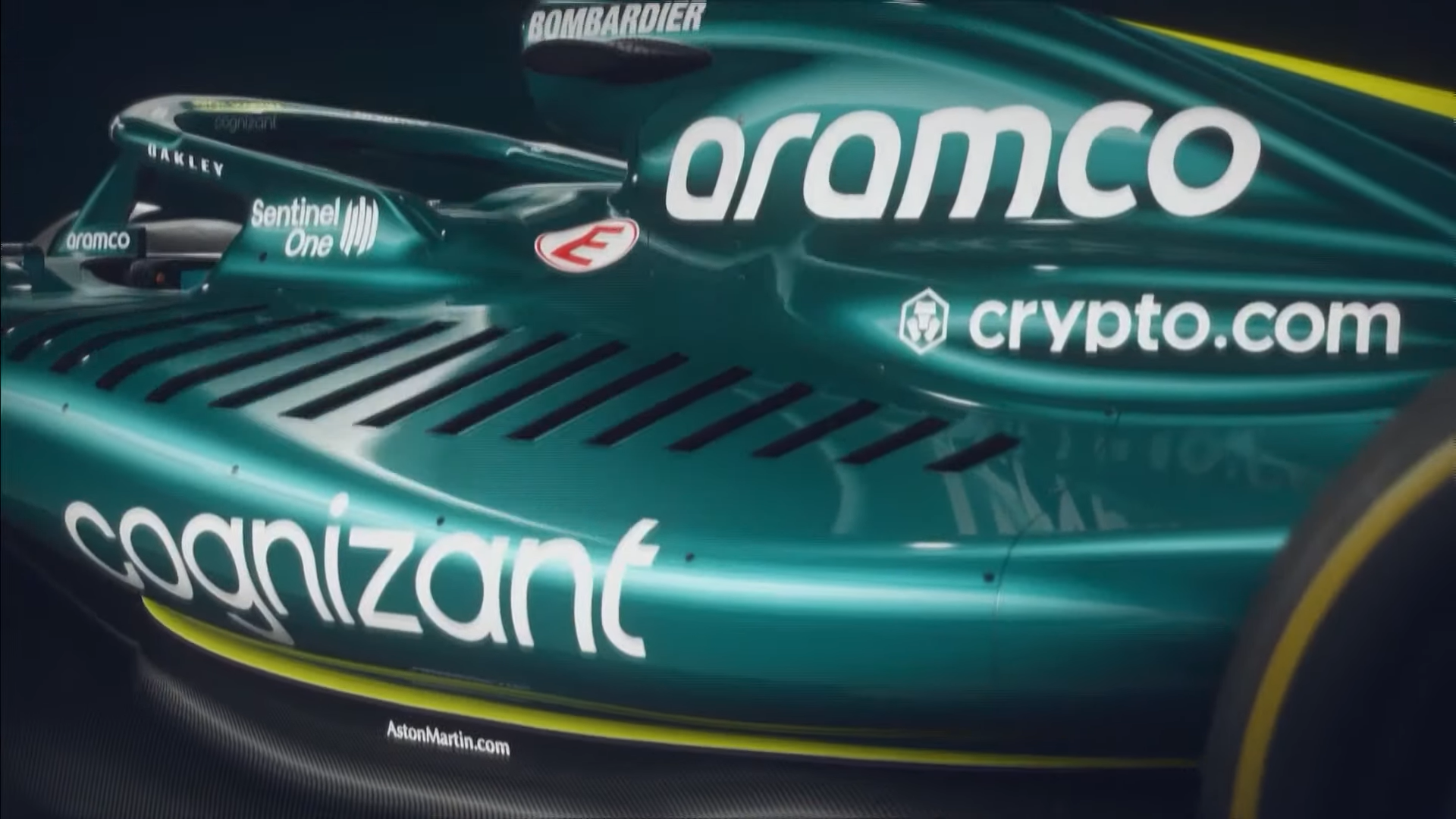
This year’s sidepods are longer than those we saw in previous years.
If you are trying to generate downforce from the underfloor then you need to maximise the surface area.
With no bargeboards to improve the airflow in this area, moving the sidepod leading edge further forward means it ends up inside the turbulent front-wheel wake.
The sidepods break with tradition because the trend over the past few years is to wrap whatever is underneath them as tightly as possible while still keeping the body line. That’s what we saw on the Haas VF-22 launched last week.
But Aston Martin is a bit closer to what we saw from the Red Bull show car.
This version has a very deep undercut between the underneath of the sidepod and the top surface of the floor.
This is to allow as much airflow as possible to pass through here and then over the top surface of the diffuser. This helps the performance of the diffuser.
AIR INTAKE AREA
This is similar to what we have seen in the past, so it’s simply about optimising the airflow into the turbo and everything that is being cooled with airflow from the inlet.
It’s also about managing the spillage that is going around the sides when it blocks up at a certain speed. After all, there’s only so much airflow you can channel into something before you get some kind of spillage.
RADIATOR EXITS
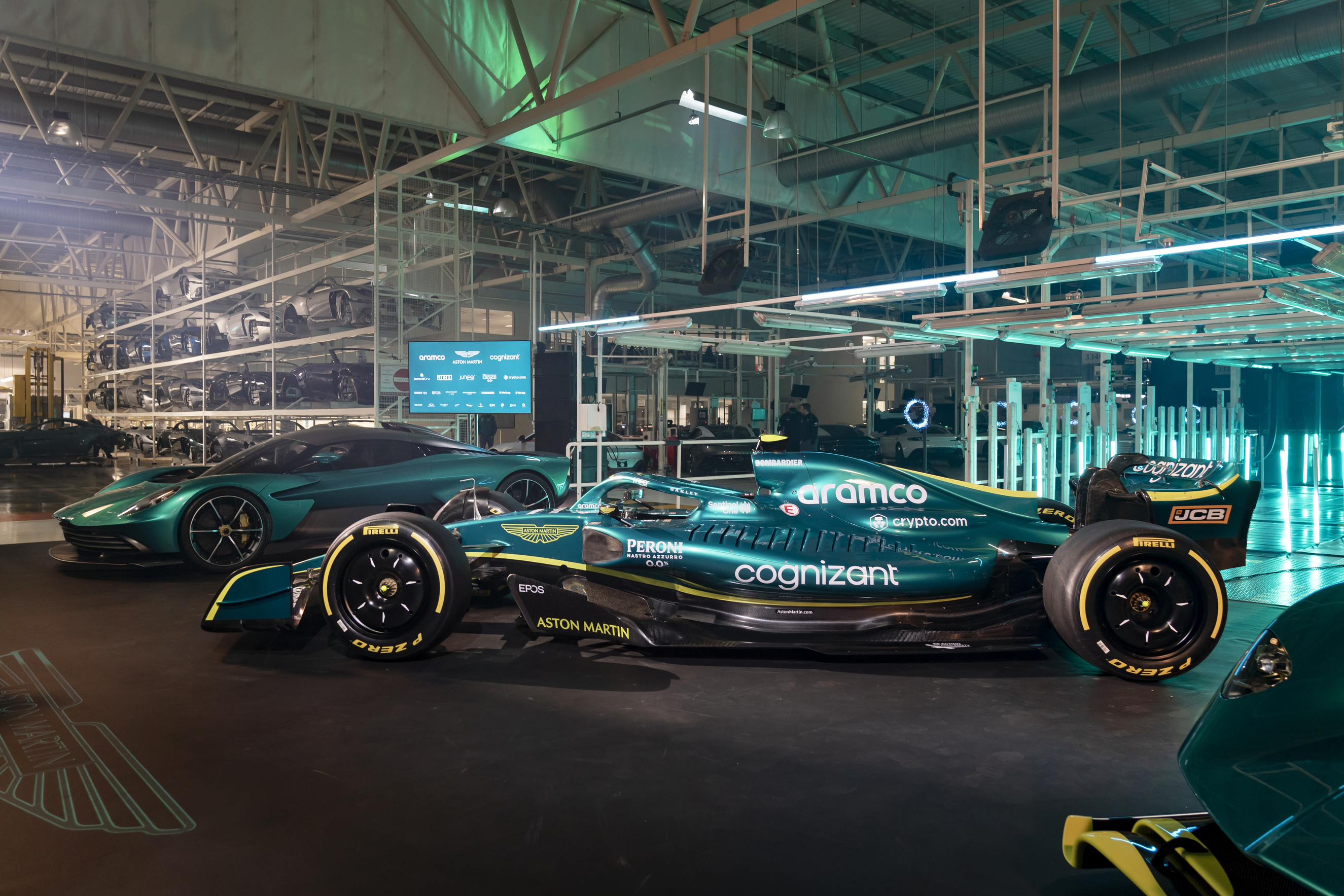
In line with the undercut sidepods, Aston Martin has used the new-for-2022 body top surface louvres. This means that the hot air exiting the radiators is being exited onto the top surface of the beam wing.
This is a component that can withstand this turbulent flow as it is hidden behind the rear suspension members and its objective is to improve the performance of the diffuser and connect it up with the upper wing undersurface flow.
COKE BOTTLE AREA
The Coke bottle area is fed by the flow coming through the undercut sidepods. In effect, this undercut more or less meets up on the car’s centreline at the rear.
Maximising this area means the airflow being spilled off the rear tyres has somewhere to go other than around the outside of the tyre, which would generate more drag.
REAR SUSPENSION
Aston Martin takes the Mercedes power unit, gearbox and rear suspension. This is a conventional pullrod design as used last year.
The top wishbone has a wide base on the inner legs, while the lower wishbone has a more rearward inner leg pickup. This was a concept Mercedes pioneered in 2020.
With the higher diffuser this area and how you work it will be critical to the performance of the diffuser. Reducing the blockage created by these components especially the lower wishbone is the objective.
REAR WING
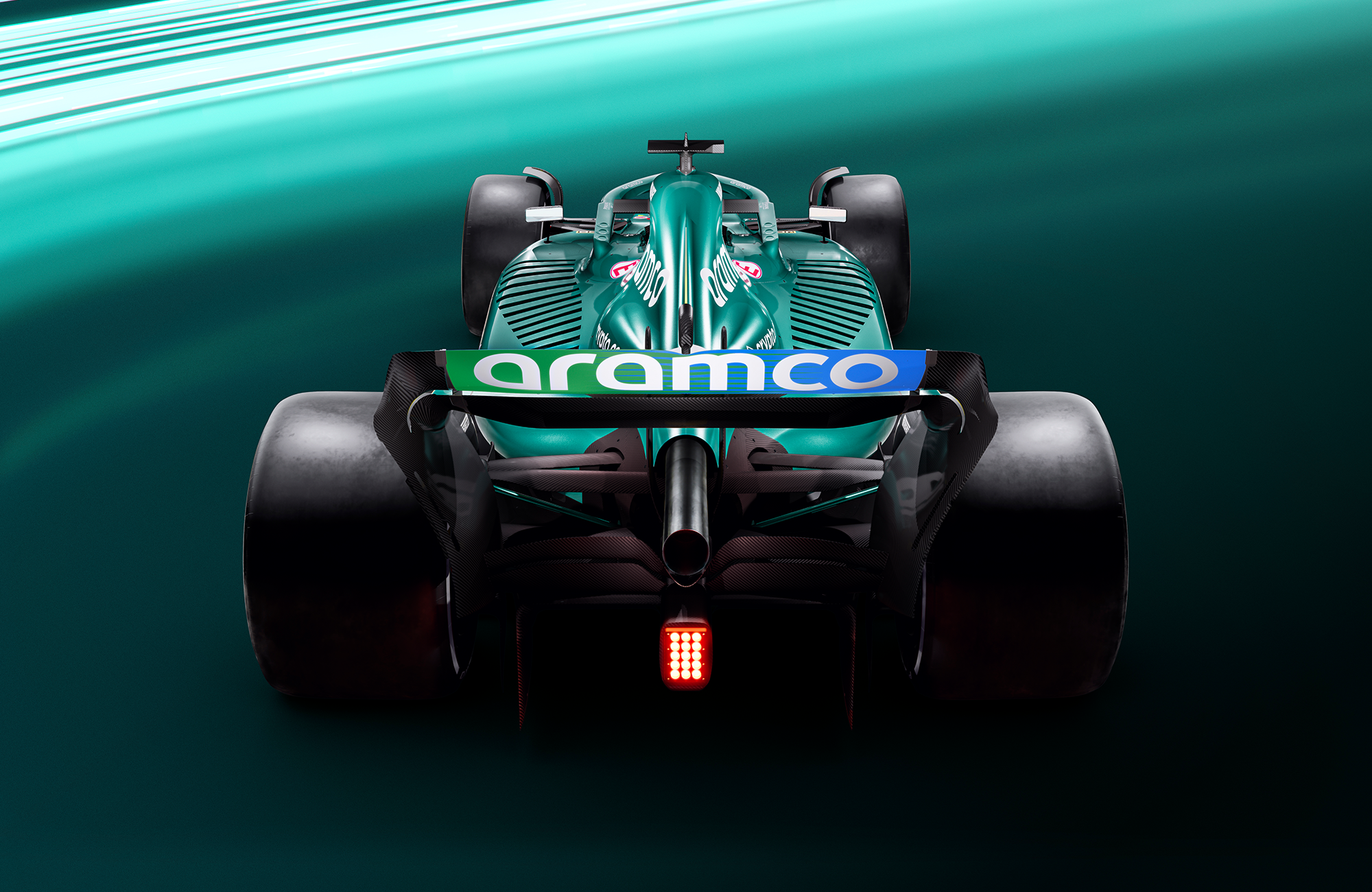
In line with the regulations, Aston Martin has the mainplane and flap sweeping down into the endplate. This reduces the vortex we often see coming off that area in damp conditions.
Aston Martin is the first to show us that it actually has a DRS actuator. The outer pivot point is just before the flap curves downwards, so it will be interesting to see what sort of a vortex is generated when the flap separates from the endplates.
Interestingly, the flap in the centre seems to have a fairly short chord that gets longer nearer to the endplates. Let’s see how much of a speed boost this gives when the DRS is operated.
BEAM WING
The beam wing returns in 2022 having been banned in 2014 and is now a fairly brutal component. It’s a twin element design with a very upright flap.
As it is so neatly fitted around the exhaust outlet, I don’t see much scope for adjustment so what you design in is what you have got.
The objective of the regulations is that the wake coming off the rear of the cars diffuser, beam wing and upper wing is turned as high as possible to reduce the turbulence generated over a following car.
DIFFUSER
It’s always quite difficult to see the diffuser detail and its turning vanes given the back of the car is a dark hole, but Aston Martin seems to have taken it to the maximum allowable exit area.
It looks like there are small Gurney flaps around the trailing edge. With the amount of airflow Aston has tried to get going over the diffuser’s upper surface, these Gurneys will act on that airflow like small trips and improve the flow through the diffuser.
They also have outer turning vanes mounted from the rear brake ducts. These are very powerful in that they mount directly to the upright assembly, so in effect, there is no lag in the downforce that they produce because of suspension movement. So even when the chassis is moving around because of braking or over kerbs, what load these produce goes directly into the contact patch.
As there is no footplate on the actual diffuser in this area, they will also help seal the diffuser from the airflow that is being displaced when the tyre rotates on the track surface.
CONCLUSION
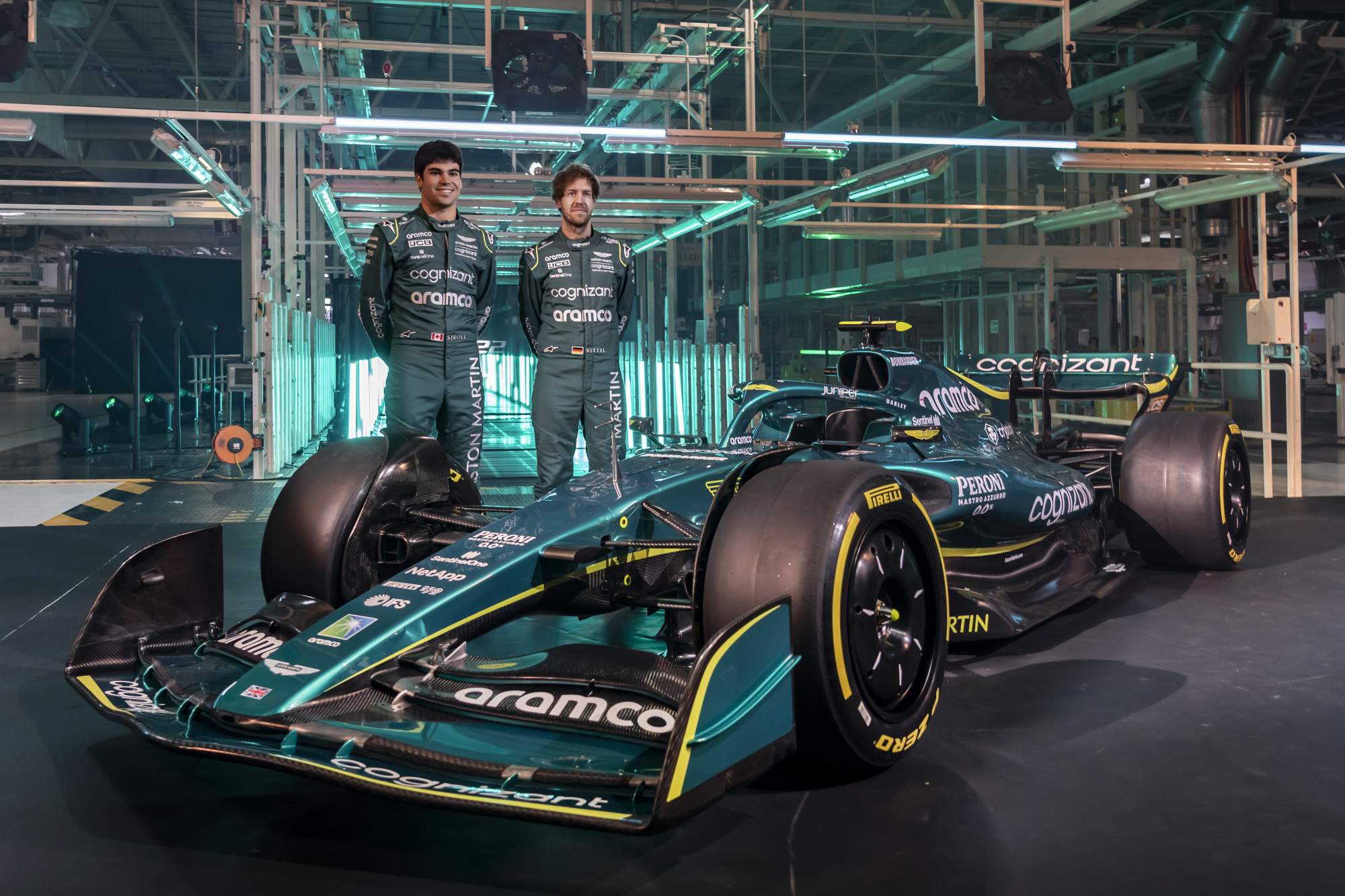
I’m impressed with the detail on the Aston Martin. The team hasn’t left many stones unturned and to me from front to back it all links up nicely. As I always say, there’s no one magic bullet – it’s the sum of all the parts that make any car work.
We have now seen a version of what Haas will bring to the show for 2022 and now we have seen the same from Aston Martin. Both are fairly different concepts in terms of how they are treating the leading edge of the front wing and the sidepod surface flow.
Who will get it right is the big question. I’m keen to see what Ferrari and Mercedes bring to the show as both of these teams that have released their cars have very close technical working relationships with them.
So is this a precursor to what we might see from Mercedes?






